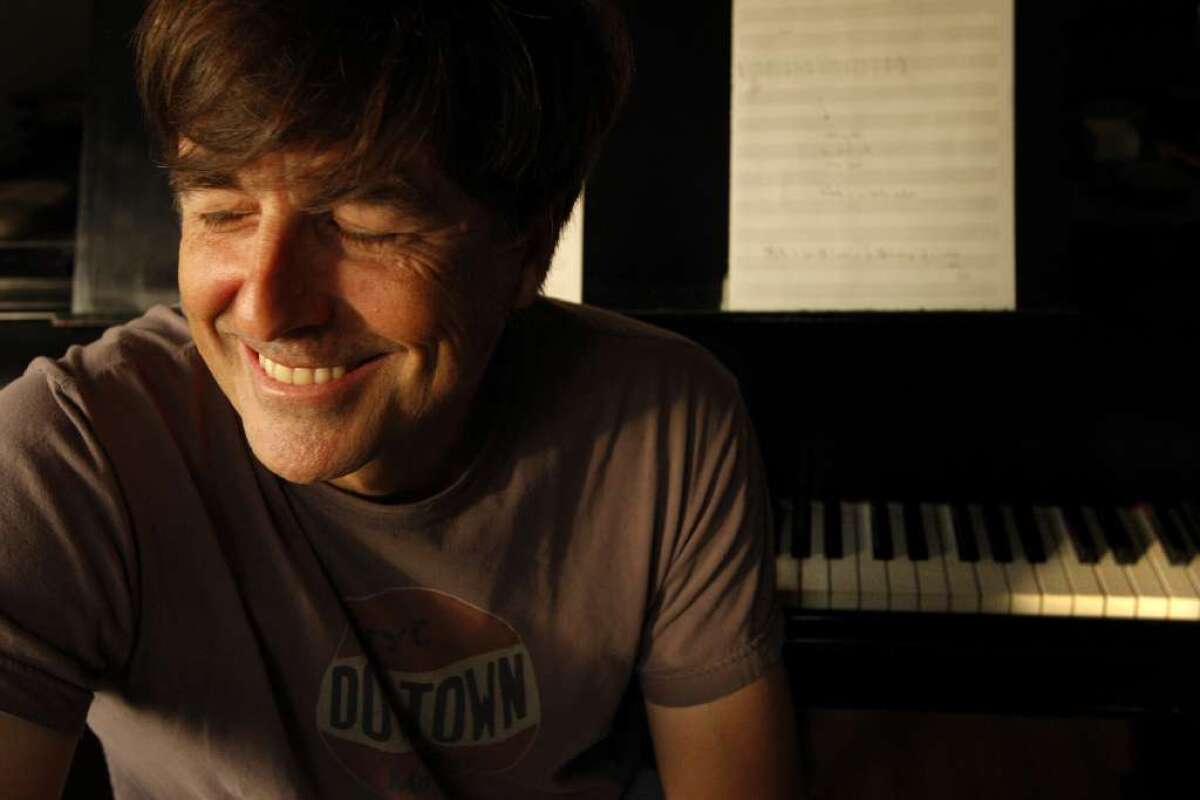Composer Thomas Newman heads back under the sea to score ‘Finding Dory’
When director Andrew Stanton was writing “Finding Nemo” in 1999, he did so listening to the music of Thomas Newman (specifically Newman’s score for “Meet Joe Black”). When the time came to hire a composer for his animated story of a clown fish searching the depths for his lost son, Stanton said: “I couldn’t imagine anybody else. His music helped me set the tone on the script. I felt like I was getting an essential cast member.”
“Finding Dory,” the sequel that comes out today, finds Stanton under the sea with Newman once again.
While the waters are certainly familiar, there are only a few direct references to themes from the first film’s score, and Newman necessarily shifted his focus to the amnesiac title character, voiced again by Ellen DeGeneres. “Essentially,” he explained, “you want to have a theme that has some sense of delight in her, and maybe some loopiness and quirkiness.”
Doing so didn’t include addressing Dory’s short-term memory loss, other than occasional moments when the music drops out, the composer said, “as if her brain just empties.” “Memory loss is just part of a pretty ebullient character,” Newman said. “Beyond all of her issues, this is a fish who really has a joy of living, and who, when she isn’t thinking, is always smiling.”
Newman, who usually garnishes his scores with unusual instrumental flavors, introduced a unique musical character to embody Dory’s ebullience: a sound invented and produced by woodwind player Steve Tavaglione on the EWI (electronic wind instrument), which the musician calls a “human sleighbell.”
“It feels watery, but at the same time it also feels like you’re capturing a childhood joy which I associate with Dory,” Stanton said. “He’s got little touches like that all the time, that are always new and fresh.”
The composer’s music has always been characterized by fluid, wispy woodwind solos and liquid strings, so he glided naturally into the ocean that Stanton first populated in 2003. As with “Finding Nemo,” though, Newman and Stanton weren’t overly concerned with the score reflecting the film’s watery environment. Stanton and company quickly ruled out the idea of characters gurgling when they spoke underwater (as in “Pinocchio”), and that approach spilled over into the music.
“There are some instances where you’d have metal sounds and colors that would give you a kind of watery feeling,” admitted Newman. “But I don’t think the music wanted to be watery in any kind of onomatopoetic way. There were certain things in ‘Nemo’ — just this low hum of ocean and watery sound — that was enough to imply water, as opposed to restating it over and over again.”
Instead, Newman splashed in colors of locale, of tropical islands and places the audience might associate with water, which took the form of sliding lap steel guitar and island percussion.
Fundamentally, the score needed what all animated films need, and Pixar’s in particular: brisk action and pathos.
“In animation, action is changing so quickly that there’s really not a lot of suspended moments,” said Newman, who recalled the sharp learning curve that came with “Nemo,” which was his first animation assignment. “In live action, sometimes a mood or a feeling can go on for quite a while. Animation is a lot more effort. There are a lot more notes.”
Fortunately, Newman has served two tours of duty with James Bond.
“I could tell when he came back onto ‘Dory’ that his action skills just went to a whole new level,” said Stanton.
“There’s nothing like desperation to sharpen your sense of focus,” Newman added.

As for pathos, the cocktail of Pixar’s patented tear-induction method and Stanton’s fascination with flawed characters made good use of Newman’s knack — honed across such grown-up projects as “The Shawshank Redemption” and “Angels in America” — for subtlety.
“I’ve always been interested in stories where the main characters are battling demons within themselves, and not some exterior bad guy,” Stanton said. “That’s always a little more psychological, a little bit more subtle, and a little bit more complex. And that’s just what you get with [Newman’s] music. He understands subtlety on such an instinctual level.”
The director jokingly described his meetings with Newman as therapy sessions.
“He’s very complex,” Stanton said. “He can’t do anything simply. He has to really understand it at a very deep level. I find that I almost get more out of it than he does when I meet with him, because I have to really, really explain what’s going on about everything in a scene. I feel like I understand my movie 10 times better every time. He makes me look like a better filmmaker.”
“I’m just asking questions to try to understand myself, not to get it out of him,” Newman said. “Andrew is someone who has a real understanding of what he feels, and an amazing ability to put a voice of leadership to that feeling. It’s not arrogance that’s leading him, but it’s just a real fervent passion. And he expects nothing but the very best from everyone. And he won’t settle, ever.”
Newman earned an Oscar nomination for “Finding Nemo” (one of his 13 to date, all unconsummated). He reunited with Stanton on 2008’s “Wall-E,” a film that relied heavily on Newman’s understated, sympathetic score for its wordless first act.
“If I’m lucky enough, and if I can afford it, I will always work with him,” Stanton said. “He’s the De Niro to my Scorsese. He’s my touchstone.”
MORE:
‘Finding Dory’ and 9 other family-friendly movies to check out this summer
Review: The occasionally entertaining ‘Finding Dory’ fails to find that ‘Nemo’ magic
The 25 most powerful film franchises in Hollywood ... and why they matter more than movie stars
More to Read
Only good movies
Get the Indie Focus newsletter, Mark Olsen's weekly guide to the world of cinema.
You may occasionally receive promotional content from the Los Angeles Times.






